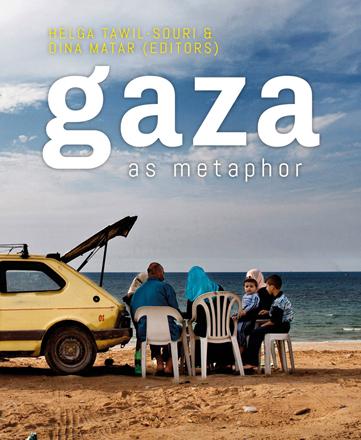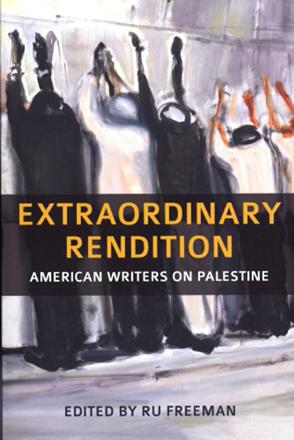You are here
‘A voluminous will to live’
By Sally Bland - Mar 27,2016 - Last updated at Mar 27,2016

Gaza as a Metaphor
Edited by Helga Tawil-Souri & Dina Matar
London: Hurst & Company, 2016
Pp. 265
If one initially wonders why a literary device like metaphor was chosen to address the all-too-real situation in Gaza, Dina Matar’s introduction provides an answer: “As Gaza becomes increasingly physically inaccessible, perhaps the easiest way to bring it closer — to grasp it, to humanise it, maybe even change it — is through metaphors.” (p. 2)
While the book cites statistics, Matar reminds that “numbers often conceal more than they expose”, and fail to convey “the context of Gaza’s lived realities”. (p. 3-4)
It is the latter which is addressed from different angles by the 23 contributors to “Gaza as a Metaphor”, who include academics, journalists, writers, doctors and UN officials. Several of them were born in Gaza; most have spent extended time there; all have something unique and important to impart in this compilation of consistently excellent essays.
In “Gaza as Larger than Life”, Helga Tawil-Souri shows concretely how metaphor can re-humanise perceptions of its inhabitants: “There are 2 million experiences of survival and creativity that are, given the conditions hindering them, extraordinary... Gaza is a voluminous will to live.” (pp. 15-16) “Gaza is… the larger than life shadow of the coloniser’s fear: a people that cannot be quelled.” (p. 26)
This last conviction is a recurring theme throughout the book.
Bringing Gaza closer are a number of personal essays, some using irony and humour as their means of truth telling. Among them is Haidar Eid’s diary of Israel’s 2014 onslaught, in which he laments, “So much technology, so much communication, so many words, so little action, so little change.” (p. 31)
Eid also makes a poignant comparison to the 1948 Nakbeh and its continuation in the present, another recurring theme in the essays, and stresses the need to return to the roots of the conflict: “Now, the lifting of the siege is not enough. When this barbaric attack ends with the victory of the Palestinian people, we do not want a Palestinian Authority, nor Oslo Accords, nor ‘security coordination’… [We want] the end of occupation, apartheid and colonialism.” (p. 35)
The metaphors used to characterise Israeli policy paint a horrifying picture of steady deterioration in Gazans’ living conditions. Several essays trace the decline of Gaza from a Bantustan to a giant internment camp to an animal pen or zoo, in what Darryl Li terms “an ongoing process of controlled abandonment”. (p. 188)
To the list of high-tech weaponry that has turned Gaza into a war laboratory, Ilana Feldman, writing about Gaza’s increasing isolation, adds “immobility as a lethal weapon”. (p. 95)
For his part, Said Shehadeh argues that the 2014 war “was designed to engineer trauma on a massive scale, and amounts to mass torture inflicted on the entire Gazan population”. (p. 37)
“Gaza is transforming yet again, this time from a zoo to a torture chamber.” (p. 51)
Many authors point out that the media’s failure to provide historical context makes it appear that Israeli attacks are ad hoc responses to Palestinian violence. The book remedies this failure with a number of in-depth accounts of Gaza’s particular history, such as the essays of Ramzy Baroud and Salman Abu Sitta.
Humanitarianism, no matter how well intentioned, also comes under scrutiny for dovetailing with the Israeli policy of enforced helplessness, neglecting history and disguising the fact that Gaza’s catastrophes are man-made and thus preventable. Jehad Abu Salim speaks for many others when he contends, “The fact that Gaza’s crisis could be solved tomorrow if the majority-refugee population were granted its right of return is completely ignored by the humanitarian discourse.” (p. 93)
Another important theme is that the almost unbearable situation in Gaza is not an exception or isolated example, but what Israel intends for the Palestinians overall. Israeli structures and methods of control and punishment, which originated in Gaza, are now commonplace in the West Bank as well — walls, fences, checkpoints morphed into border-like terminals, the segregation and urban concentration of the population as more and more land is confiscated, etc. As stated by Glen Bowman, “Israeli policies are fundamentally the same for both areas but… Gaza is further down the road to encystation and bare life.” (p. 120)
Sara Roy’s deeply moral essay counters Israel’s claim that Gaza is a place where innocent civilians do not exist, saying that “among all the stories Gazans could tell, one continues to preoccupy them more than all the others — an entreaty that still remains unheard: the quest for human dignity”. (p. 220)
If widely read, this book has the potential to raise the volume and increase the resonance of Gazans’ stories.
Related Articles
“Syria Speaks” is a compilation of personal narratives, short fiction, essays, poetry, song lyrics, posters, art works and photos that express the thinking and experience of the democratically-minded Syrians who sparked the initial nonviolent phase of the 2011 uprising, before it was overtaken by regime brutality and religious extremists.
Extraordinary Renditions: American Writers on PalestineEdited by Ru FreemanMassachusetts: Olive Branch Press/Interlink Publishing, 2016Pp.
Shifting Sands: The Unravelling of the Old Order in the Middle EastEdited by Raja Shehadeh and Penny JohnsonUS: Olive Branch Press/Interlink












